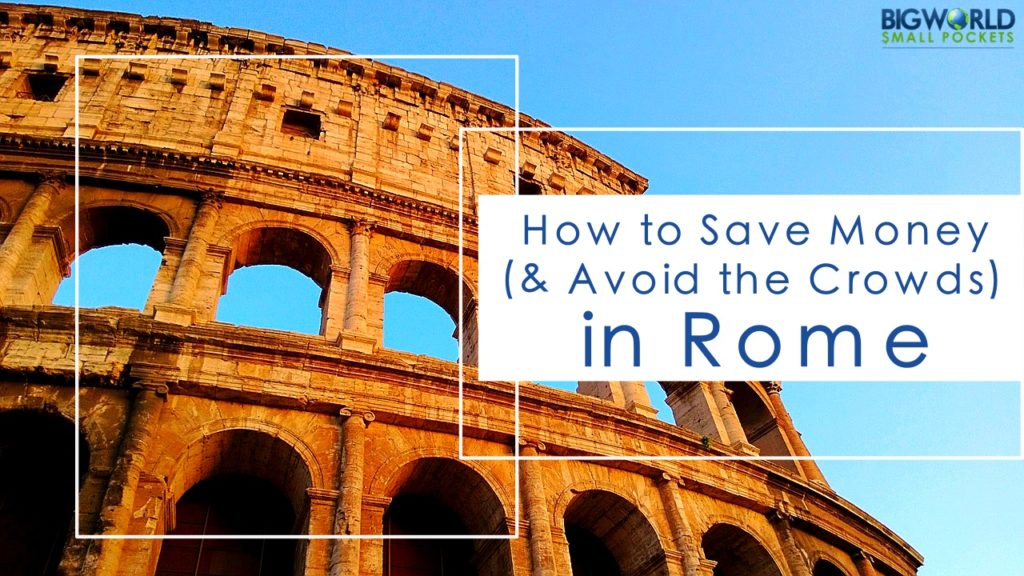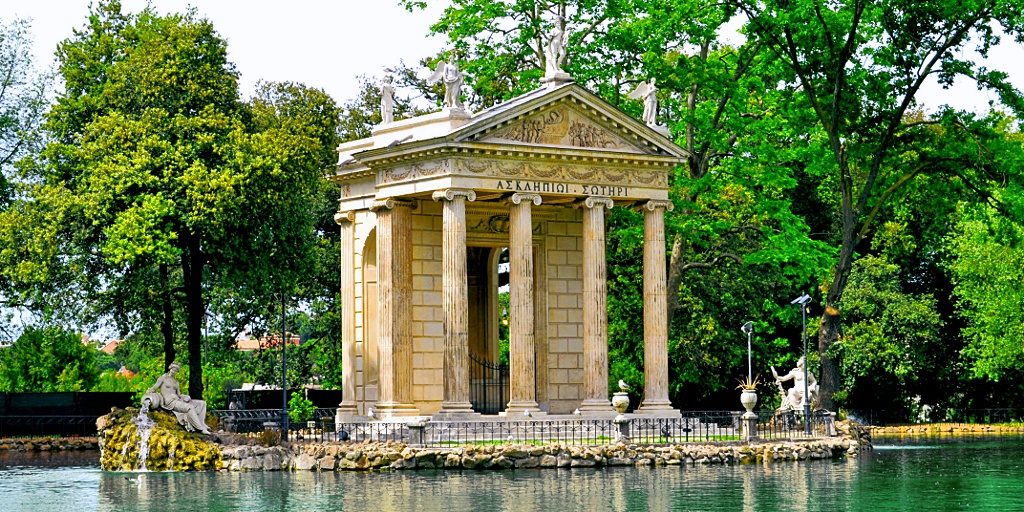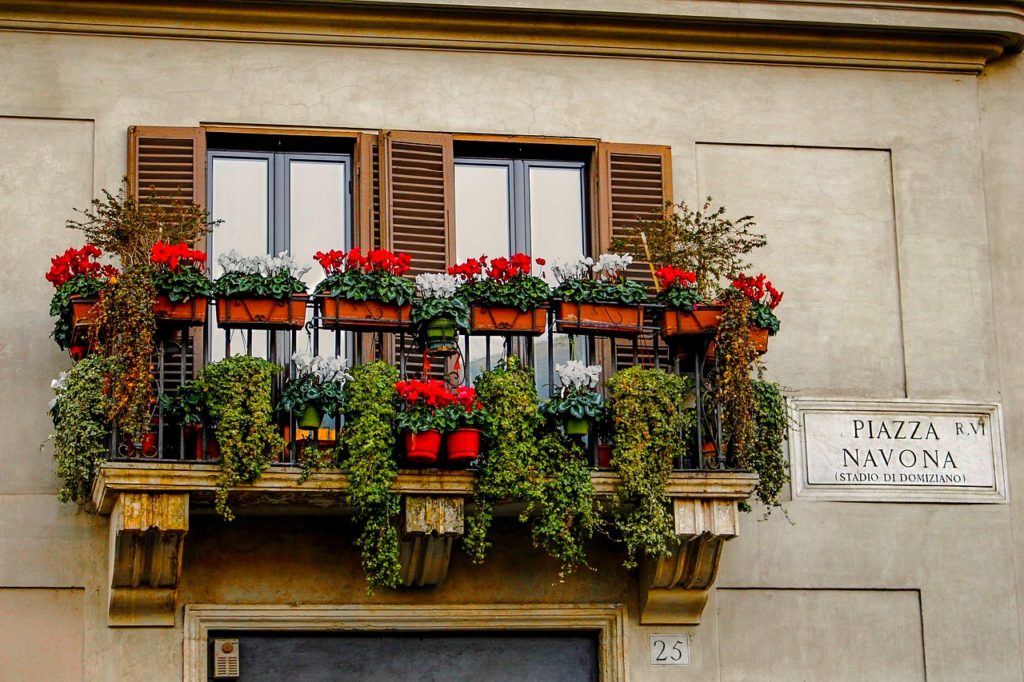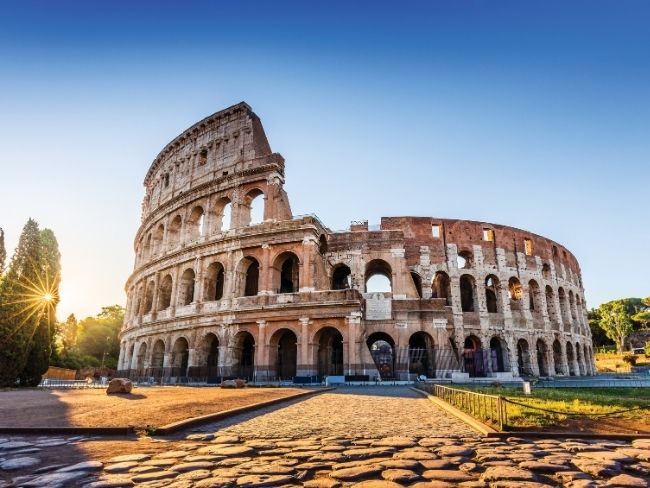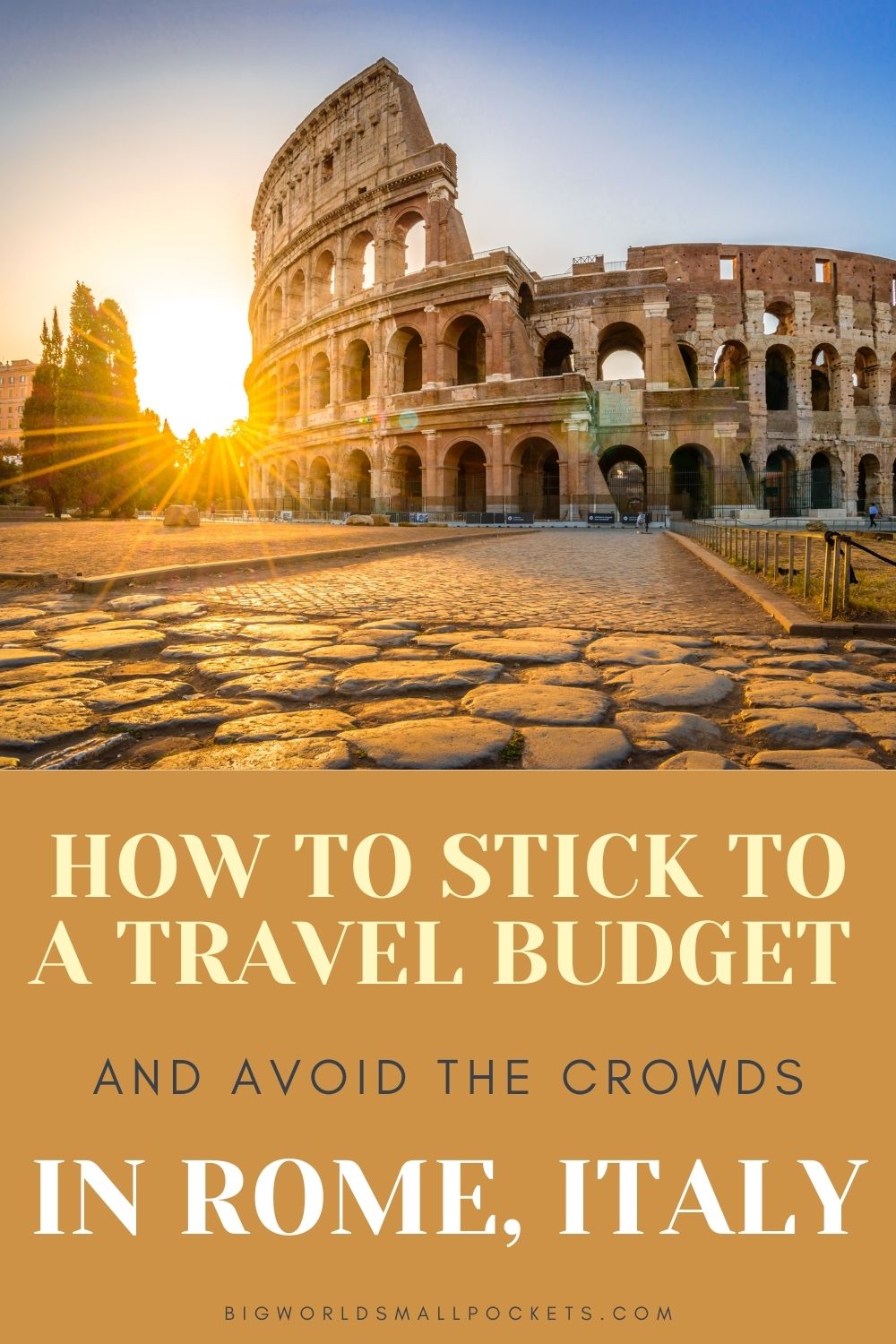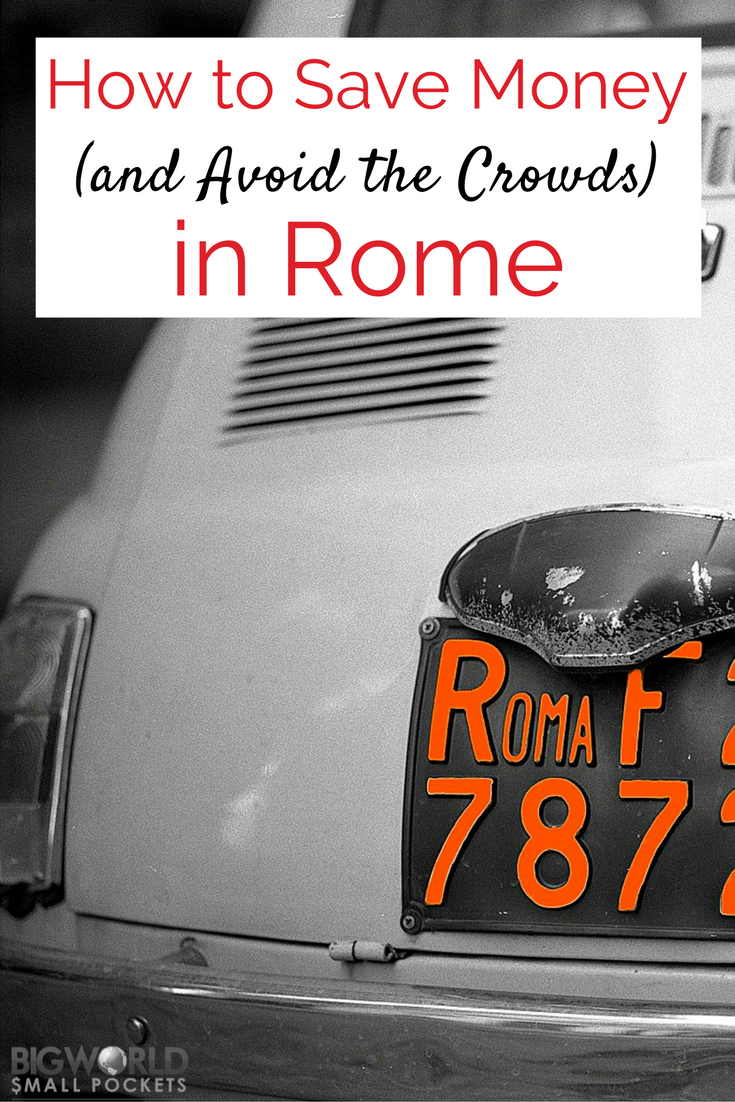Rome is rightfully known throughout the world for its artistic masterpieces, historic wonders, and culinary treats – and there’s no question it’s one of the best places to visit in Western Europe.
Unfortunately, hordes of tourists and high prices often prevent travellers from fully appreciating everything the city has to offer.
Thankfully, you don’t have to abandon your budget nor be surrounded by mobs of day trippers while there.
Here are 5 things I discovered while living in Rome that you can do to save money and avoid crowds…
Related Posts
- Top 10 Free Things to Do in Bruges, Belgium
- How to Spend the Best 72hrs in Amsterdam
- Paris Pass Review – Is It Worth It?
This page contains affiliate links meaning Big World Small Pockets may receive a small commission on any purchases at no extra cost to you.
#1 Hike the Gianicolo Hill
Often overlooked, the Gianicolo Hill provides visitors and locals alike with a beautiful and quiet escape from the bustle of downtown Rome.
Located behind the Trastevere neighbourhood, on the southwestern side of the Tiber, the Gianicolo Hill is a short walk from the city centre.
The park at the hill’s summit is the best location from which to view the regal villas, magnificent churches, and ancient ruins that make up the Roman skyline.
Sure, you could brave the crowds and pay to visit the Dome of St. Peter’s Basilica or the Altare della Patria, but this view is free AND you get to see both buildings from here.
As an added bonus, you can stop at the San Pietro in Montorio on the way up.
#2 Explore the City Center at Night
While Rome’s historic centre can be overwhelmingly crowded during the day, things become incredibly peaceful at night.
The once-crammed streets and piazzas empty out- especially past 10 PM, leaving you with the feeling that you have the city entirely to yourself.
I recommend taking the following itinerary:
Piazza San Pietro
Just in front of Saint Peter’s Basilica, this is the perfect introduction to Rome at night.
Look at the massive colonnades on both sides of the Piazza.<
Designed by the Baroque artist Bernini, they were intended to resemble arms pulling the visitors towards the Catholic Church.
Castel Sant’Angelo
Following Via della Conciliazione, you will end up at the imposing Castel Sant’Angelo.
Originally built as a mausoleum for the Roman Emperor Hadrian, it was later used by popes as a fortress (a passageway connects it to the Vatican), and now houses an excellent museum.
Piazza Navona
Cross the Tiber using the statue-covered Ponte Sant’Angelo, and head east towards Piazza Navona, a space once occupied by the Stadium of Domitian.
A series of monumental fountains dominate the piazza, and over-priced cafes line the edges.
Depending on how late you are here, there may still be some tourists, but the overall feeling will be one of peace rather than chaos.
Pantheon
Again head to the east, this time towards the Pantheon.
Built in the first century AD as a temple to all Roman gods, it was turned into a Catholic church in 609.
While the Pantheon is closed at night, you can still appreciate the building’s engineering from outside.
Nearly 2000 years later, it still has the world’s largest unreinforced concrete dome.
Piazza Venezia
Ten minutes to the south is Piazza Venezia, home to the impossible-to-ignore Altare della Patria.
Erected in 1885 to honor Victor Emmanuel II—the first king of a united Italy—the building is highly controversial, to say the least.
The glaringly white marble exterior stands out among the city’s predominantly earth-toned buildings.
Many Romans even refer to it as la torta nuziale (the wedding cake). And yet, it remains a must-see for all visitors to Rome!
Capitoline Hill
Just behind the Altare is the Capitoline Hill, one of Rome’s most historic sites.
Formerly the location of Rome’s most important temples, it is now capped by a grand piazza designed by Michelangelo.
A modern copy of an ancient equestrian statue of the Emperor Marcus Aurelius stands in the center (the original is now in the adjacent Capitoline Museum).
Head to the nearby Via Monte Tarpeo for a stunning nighttime view of the Roman Forum.
This entire walk can be done comfortably in under 2 hours.
And while it isn’t a substitute for experiencing these places in the daytime – you can’t enter any of the buildings at night, for example – it will provide you with a very different perspective on the city.
BONUS TIP: If you plan on sightseeing a lot in Rome, then the Rome Pass is a great way to save tons of money and tons of time when visiting the city’s top attractions. Granting you free entry and line-skipping, check out how much you could save with The Rome Pass now!
#3 Discover some Lesser-Known (and FREE) Churches
Instead of shelling out some serious cash to enter a museum or waiting in line at St. Peter’s Basilica, head to one of Rome’s lesser-known churches to see some incredible artwork for without spending a dime or getting a headache.
My personal favourites are:
San Pietro in Vincoli
Just a ten minute walk from the Colosseum, this criminally under-visited church houses Michelangelo’s monumental tomb for Pope Julius II, who also commissioned the painting of the Sistine Chapel ceiling.
At the centre is a sculpture of Moses, which Michelangelo considered his most lifelike creation.
San Pietro in Montorio
Located on a hill behind Rome’s Trastevere district, San Pietro in Montorio is best known for the Tempietto, a commemorative tomb designed by the Renaissance architect Donato Bramante.
More a work of sculpture than architecture, builders around the world quickly copied the Tempietto’s decorative style.
Sebastian del Piombo’s frescoes – found in the first chapel on the right – are also worth seeing.
Santa Maria del Popolo
Despite being just ten minutes from the Spanish Steps, few visitors come to this beautiful church.
Highlights include the Raphael-designed and Bernini-decorated Chigi Chapel, and the Cerasi Chapel, which contains The Conversion of Saul and The Crucifixion of St Peter by the sixteenth-century painter Caravaggio.
The stark contrast between light and shade seen in the paintings, known as chiaroscuro, was revolutionary at the time.
Santa Maria Sopra Minerva
Just one block east of the Pantheon, Santa Maria Sopra Minerva usually contains more paintings than tourists.
Of particular note are the frescoes by the Renaissance painter Filipino Lippi in the Carafa Chapel, and Michelangelo’s statue of Christ the Redeemer, located to the left of the main altar.
Amazingly, you can view this work up close, as opposed to from behind bullet-proof glass, as is the case with his Pietà at the Vatican.
If you want to take a tour of the Vatican however (and in my opinion, it’s worth it), then check out this great option which includes skip the line admission, as well as an expert guide to accompany you to the Vatican Museums, the Sistine Chapel and St Peter’s Basilica. Added bonus: the group will never exceed 35 people!
#4 Head to a Beautiful Park
Rome may not be world-famous for its greenery, but it does have a number of incredible parks that are free of charge.
Villa Borghese Gardens
Located just to the right of the Piazza del Popolo, the Villa Borghese Gardens is a convenient taste of bucolic life in downtown Rome.
Originally built in the 1600s for Cardinal Scipione Borghese, the gardens house a number of elegant buildings, including the worthwhile Galleria Borghese.
Villa Doria Pamphilji
Found just behind the Gianicolo Hill, the Villa Doria Pamphilji and its surrounding park offer an even more secluded and relaxing experience.
Despite its central location, the park remains tourist-free, instead being the choice place for Roman families on a sunny day.
Villa Celimontana
Further afield is the Villa Celimontana and its gardens.
Get lost among the greenery and enjoy the ancient carved marbles found throughout the park.
During the summer months, you may even stumble upon one of the evening jazz concerts held here.
#5 Visit in the Off Season
Like many cities in Europe, Rome completely changes during the offseason.
Prices for accommodations go down, the weather becomes mild, and the masses of tourists largely disappear.
I remember being there in March of 2013, on the weekend of Pope Francis’ inauguration.
I had expected long lines and increased prices, but I found neither.
As such, the easiest way to save money and avoid crowds in Rome is to visit in the offseason, or roughly from October to May.
In contrast, July to September have the highest tourist numbers, with August being the top month.
If you really don’t like crowds or the heat, stay away from Rome in August at all costs!
Just enter your details below and I'll email it you - simple!
Information will be sent to the email provided above
Mini Travel Guide to Rome
When to Visit Rome?
I suggest avoiding the heat of the summer months and visiting Rome during the shoulder months of April, May or September instead.
How to Get to Rome?
You can fly direct to Rome’s international airport from across Europe.
As always, I recommend Skyscanner for finding the best flight deals.
If you’re trying to reduce your carbon footprint, then training to Rome is also a great option.
Buy your rail tickets to the Italian capital here.
For travellers on a serious budget, then getting a bus to Rome is the most affordable option.
Flixbus offer lots of routes to Rome at some unbeatable prices.
Where to Stay in Rome?
Get the full lowdown on the best places to stay in Rome here.
Travel Insurance for Italy
World Nomads offers simple and flexible travel insurance. Buy at home or while travelling and claim online from anywhere in the world.
Alternatively, if you’re a long-term traveller, digital nomad or frequent remote worker seeking travel health cover, check out Safetywing’s Nomad Insurance policies.
Travel Money in Italy
When it comes to paying for things in Rome, you want to ensure you’re not being charged overseas transaction fees or getting poor exchange rates when using your card abroad, which is why I always take my Wise card away with me wherever I travel.
The easy way to spend abroad with real exchange rates, no markups and no sneaky transaction fees, you can use your Wise card just like a debit card here… and it links easily with Google and Apple pay – sold! Grab yours here.
PIN IT TO PINTEREST!
As you can see, a visit to Rome doesn’t have to mean spending lots of money or battling crowds.
By discovering some of the lesser-known churches, exploring the city at night, hiking the Gianicolo Hill, heading to a park, or visiting in the offseason, visitors can appreciate Rome’s historic and artistic beauty in peace without destroying their budget.
Do you have any other great tips for exploring this super city on the cheap?
Andrew has spent the majority of the past five years travelling and teaching throughout the world.
His goal is to help people become the best person they can by connecting them with life-altering travel experiences.
Take the first step towards your dreams by visiting his blog AuthenticTraveling.com> to read more about his fantastic adventures or follow him on Twitter or Facebook.

